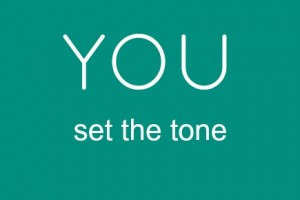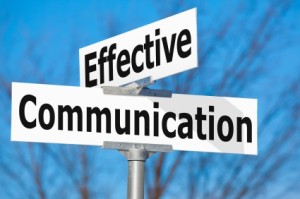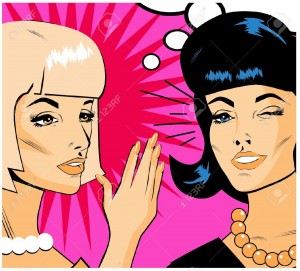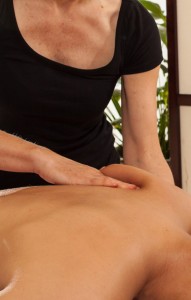 So, how do you start your massage session? Not your intake, but the part of the massage where you’re actually making contact with the client’s body. A lot of great therapists will come back into the massage room, walk right up to the table, and just begin their routine. They might start with effleurage, the nice relaxing gliding technique. Or, they might start with something called petrissage, the kneading technique.
So, how do you start your massage session? Not your intake, but the part of the massage where you’re actually making contact with the client’s body. A lot of great therapists will come back into the massage room, walk right up to the table, and just begin their routine. They might start with effleurage, the nice relaxing gliding technique. Or, they might start with something called petrissage, the kneading technique.
As wonderful and effective as these styles are, it’s important to remember that jumping right into a technique can feel abrupt. Just as you would not jump right into a conversation with someone when you enter a room without first introducing yourself, in a massage session, you need to take a moment to introduce your touch.
People are very stressed nowadays. They have a lot going on in their mind, and it might take them almost half the massage session to settle in and relax. Beginning with one of these introductory techniques can help calm your client and get them into a state where they can receive greater benefit from your massage:
- Applying compression on different parts of their body through the blanket
- Rocking their body gently to allow them to release tension they might be holding
- Prolonged holding positions that can be combined with compression along the back of their legs, their lower back, or their shoulders
Generally, massages that start with one of these kinds of introductory techniques feel more satisfying and help your client be at their deepest states of relaxation earlier on in their session with you. So, go ahead and practice your own signature technique, but if you’ve never thought about how you introduce your touch, consider adding compression, holding, or rocking rather than just jumping right in to the massage.







 Successful customer service with massage clients is built on communication and trust. An integral piece of building this trust are the basic courtesies of how to offer feedback at the end of a massage session. A good massage therapist will quickly discover that clients enjoy a brief discussion at the end of the massage about how the session went, anything that the therapist discovered, and suggestions for a continued treatment plan. However, many therapists can be unsure of how to initiate the post-massage discussion or grow to feel uncomfortable about it.
Successful customer service with massage clients is built on communication and trust. An integral piece of building this trust are the basic courtesies of how to offer feedback at the end of a massage session. A good massage therapist will quickly discover that clients enjoy a brief discussion at the end of the massage about how the session went, anything that the therapist discovered, and suggestions for a continued treatment plan. However, many therapists can be unsure of how to initiate the post-massage discussion or grow to feel uncomfortable about it. Chances are, if you’ve been practicing massage for a while, you are a skilled, effective, and caring practitioner and that you put yourself forward as such with a professional demeanor and appearance. But what about your massage room? Have you ever wondered what it says to your clients about you? Try doing this quick audit the next time you have a few minutes:
Chances are, if you’ve been practicing massage for a while, you are a skilled, effective, and caring practitioner and that you put yourself forward as such with a professional demeanor and appearance. But what about your massage room? Have you ever wondered what it says to your clients about you? Try doing this quick audit the next time you have a few minutes:
 Many massage therapists worry about providing pleasant service, but clients can be more nervous than we are. After all, it can feel very vulnerable, lying there disrobed on a table for an hour, having a therapist working hard on them. Some clients even worry that they’re somehow inconveniencing or overworking their therapist. This concern comes out in questions such as, “how many people have you seen today?” or kind statements like, “it must be hard to do this job.” One of the best remedies to ease your clients’ anxiety is to overtly ask the client to come see you again. This reassures them that not only do you not feel put out by your work, but you enjoy it and look forward to it and to building a good rapport with them. It’s important to keep in mind that, beyond good clinical massage technique, clients are also looking for a connection or relationship. It can be easy to overlook that critical aspect and think that you can let your massage speak for itself, but a few simple words to the effect that you’d like to see the client again makes clear that you are inviting that connection. A lot of therapists will use words something like “It was good to work with you” or “I hope you come back to see me again.” While this is better than saying nothing, it is very passive and doesn’t really speak for your genuine desire to have the client come back.
Many massage therapists worry about providing pleasant service, but clients can be more nervous than we are. After all, it can feel very vulnerable, lying there disrobed on a table for an hour, having a therapist working hard on them. Some clients even worry that they’re somehow inconveniencing or overworking their therapist. This concern comes out in questions such as, “how many people have you seen today?” or kind statements like, “it must be hard to do this job.” One of the best remedies to ease your clients’ anxiety is to overtly ask the client to come see you again. This reassures them that not only do you not feel put out by your work, but you enjoy it and look forward to it and to building a good rapport with them. It’s important to keep in mind that, beyond good clinical massage technique, clients are also looking for a connection or relationship. It can be easy to overlook that critical aspect and think that you can let your massage speak for itself, but a few simple words to the effect that you’d like to see the client again makes clear that you are inviting that connection. A lot of therapists will use words something like “It was good to work with you” or “I hope you come back to see me again.” While this is better than saying nothing, it is very passive and doesn’t really speak for your genuine desire to have the client come back. Every field has its own language or lingo, and massage is no different. We all know about the importance of genuinely inviting
Every field has its own language or lingo, and massage is no different. We all know about the importance of genuinely inviting 
 Before a massage session begins, it’s not uncommon for a massage therapist to palpate their client to get a feel for the quality of their muscle tissue and where to focus their treatment. This allows the therapist to understand what techniques to use and perhaps get an indication of the underlying problem. However, palpating without also engaging the client is a missed opportunity. If the client says the pain is “in my neck,” or “my lower back,” those are broad regions that involve a number of muscles. For example, I have a shoulder injury, where my main tension is right in my supraspinatus, but if I only say “shoulder,” therapists will work on the interior angle of my scapula, or even my lats, and barely focus at all on the supraspinatus, which is right on top of the shoulder. While palpating, asking the client to confirm where they feel their aches and pains not only allows you to be more specific in understanding where a particular injury may be, but also gives the client confidence that you are really attuned to their issues, which will make them feel more trusting and comfortable about the massage that’s about to follow. Asking a few questions lets your client know that you care by showing them that you are actively investigating their needs, rather than just going “hmmm, mmm-hmm, I see…” which can inadvertently come off as uninterested and dismissive.
Before a massage session begins, it’s not uncommon for a massage therapist to palpate their client to get a feel for the quality of their muscle tissue and where to focus their treatment. This allows the therapist to understand what techniques to use and perhaps get an indication of the underlying problem. However, palpating without also engaging the client is a missed opportunity. If the client says the pain is “in my neck,” or “my lower back,” those are broad regions that involve a number of muscles. For example, I have a shoulder injury, where my main tension is right in my supraspinatus, but if I only say “shoulder,” therapists will work on the interior angle of my scapula, or even my lats, and barely focus at all on the supraspinatus, which is right on top of the shoulder. While palpating, asking the client to confirm where they feel their aches and pains not only allows you to be more specific in understanding where a particular injury may be, but also gives the client confidence that you are really attuned to their issues, which will make them feel more trusting and comfortable about the massage that’s about to follow. Asking a few questions lets your client know that you care by showing them that you are actively investigating their needs, rather than just going “hmmm, mmm-hmm, I see…” which can inadvertently come off as uninterested and dismissive. All massage therapists know that we prefer our clients to speak up during a massage if anything feels uncomfortable. Unfortunately, the necessity of this message leads us to repeat ourselves so often on this score that, if we’re not careful, the discussion about feedback becomes rote, almost robotic, as in: “by-the-way-if-anythhing-doesn’t-feel-right-please-let-me-know.”
All massage therapists know that we prefer our clients to speak up during a massage if anything feels uncomfortable. Unfortunately, the necessity of this message leads us to repeat ourselves so often on this score that, if we’re not careful, the discussion about feedback becomes rote, almost robotic, as in: “by-the-way-if-anythhing-doesn’t-feel-right-please-let-me-know.”